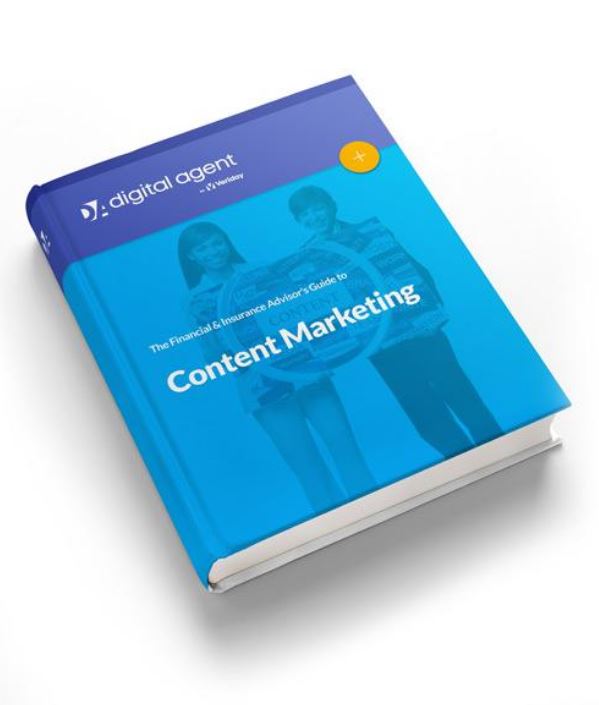Blogging Like It’s Nobody’s Business
What is Blogging?
Blogging is the act of adding new material to or the regular updating of a blog. A blog is a collection of articles that provide helpful valuable educational and remarkable content to your target audience.
You might be thinking, “it sounds like a lot of work” but there are many benefits to creating a blogging strategy that will benefit advisors and their business.
What’s the difference between a blog and a website?
As an advisor, if you’re thinking “I have a website, why do I need a blog?” They are often mistaken for the same thing when they are not. Blogs are updated more frequently whereas the rest of your website is static content that is not updated often. This could be basic content about you and your business’s products and services.
Blogging Benefits
1. More traffic & New Visitors
Blogs that are consistently updated often see up to 55% more website traffic than those that don’t. Blogs that are updated often also help with Google rankings as the crawlings see a new blog post as fresh new content.

This advisor started blogging on October 1st, 2014. As you can see, after they began blogging, the traffic going to their website increased, both organically and in total. In addition, there were many new users that started visiting their website after they started blogging.
2. Delivering an Experience
Marketing is not what it used to be where it was constant one-way communication. Now, it’s about creating advocates for your product or service. It’s about creating an experience online that will make your audience want to come back. If your audience feels they are getting valuable, relevant content on topics that matter to them they’ll have a great experience with your content and want to read more of your content.
Social media changed that entire game. With social media, your audience can engage and interact with your content. Engaging in blogging is a strategy to extend your experience to a communication medium where your audience lives.
3. Develop Authority and Trust With Your Audience
Being an authority helps to establish trust, develop credibility as a thought leader in your industry. By writing blog content advisors can position themselves as experts in their particular specialty. Your target audience wants to read content that is relevant to them by someone that is reputable and knows what they are talking about.
Components of a Blog Post
1.Page title: Keyword focused page title
2.Page URL: A url that has the important keywords of your blog post will help with SEO
3.Blog title: Captivating, eye-catching title to make your audience want to click and read your article. There are some free tools you can use to check the quality of your blog title.

4. Description: The description is what will be displayed in search results when your blog post comes up.

5.Content: Writing content that has keywords is important for getting your blog post to rank on Google. Keyword research can be done using the Keyword Planner tool.
6. Call to Action: Having a call to action at the end of each blog post is crucial in moving prospects through the buyer’s journey. This could be Contact, Download, Sign Up. By completing an action, the prospect is telling you they are interested and want to learn more.
Common Mistakes and Pitfalls
Pitfall #1 – Expecting Overnight Success
Success in blogging takes time but people who commit to a consistent blogging strategy will see results over time.
Pitfall #2 – Forgetting to tell your audience about your writing
Just because a new blog has written, that doesn’t mean people will automatically read it. It’s up to you to tell your audience about your new blog post. This could be posting it on social media channels and including the blog post in an email newsletter. It’s a good idea to always look for new ways to promote new blog content to get it in front of new people.
Pitfall #3 – Missing Conversion Mechanisms
When it comes to blogging or any marketing activity, your ultimate goal would be to get new clients and new business right? Be sure to include a call to action to convert your blog readers into actual leads. You want to be always trying to move prospects through your sales funnel.
Pitfall#4 – Creating Content that is off topic
It’s important to know your target audience and write content that is relevant and important to them. The blog content should relate to the title of the blog post so people know what to expect when they’re reading.
Pitfall #5- Trying to Create the Perfect Post
If you’re new to blogging, it can be easy to get caught up in making the perfect blog post. There are thousands of blog posts on how to make the perfect blog post but having a completed live blog post is always a better approach.
Our eBook, The Financial & Insurance Advisor’s Guide to Content Marketing, can help financial advisors get discovered online quickly and easily, check it out to take the next steps in your content marketing journey!



